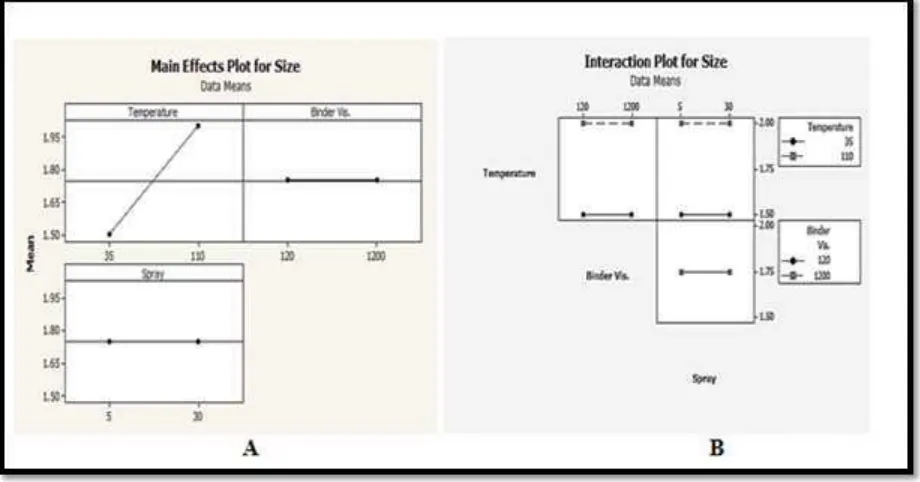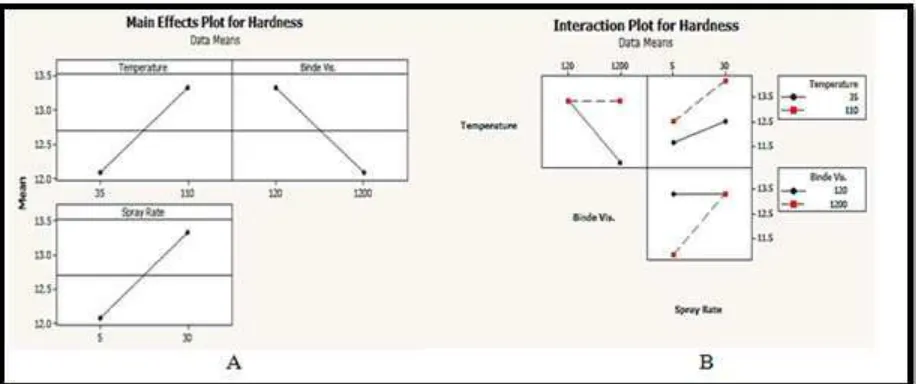Top Spray Fluidized Bed Granulated Paddy Urea Fertilizer
S. Subramonian
1,a, Md. Radzai Said
2,b, O. Rostam
1,c, M. Hafiz
1,d,
H.H. Luqman
3,e, A. Shaaban
1,f, M.F. Dimin
1,g1 Faculty of Manufacturing and Process Engineering, Universiti Teknikal Malaysia Melaka, Hang
Tuah Jaya, Malaysia
2 Faculty of Mechanical Engineering, Universiti Teknikal Malaysia Melaka, Hang Tuah Jaya,
Malaysia
3 Department of Chemical Engineering, Universiti Teknologi Petronas, Bandar Sri Iskandar,
Malaysia
asivarao@utem.edu.my, b radzai@utem.edu.my, crostamomar898@gmail.com, dhafizzani@gmail.com, e luqmanalhakimhassan@gmail.com, fazizahs@utem.edu.my,
gfairuz@utem.edu.my
Keywords: Granulation; Fluidized bed granulator; Urea fertilizer; Urea granulation; Process parameters
Abstract. Top spray granulation process is a common technique used widely in pharmaceutical, food and special chemical modification for fertilizer manufacturing. Nevertheless, there is still a lack of studies regarding to the description of controlled parameters with dynamic correlation in targeting to produce urea granules. Thus, this research was carried out to introduce the crucial applied process parameters using top spray technique for paddy urea fertilizer production. The acquisition process parameter readings were verified by obtained yield of urea granules (UG) which featured as an optimum particle diameter size from 2 mm to 6 mm with reasonable hardness (crush strength) in range 2.0 kg/granule to 4.0 kg/granule, these criteria were required as a slow - release mechanism during soil adsorption interaction in paddy field to reduce amount of fertilizer consumption. Three significant parameters have been selected namely as air inlet temperature, the viscosity of binder solution and rate of top spraying from starch liquid binder to generate greater UG size from wet granulation interaction with smooth coalescence and consolidation growth . The data classification was screened by One-Factor-at-a-Time (OFAT) 101 method and supported by 2 levels and 3 factors (23 ) of full factorial design for clear description to vindicate the critical parameter required during urea granulation using fluidized bed granulator corresponds to low energy consumption and economical process. The obtained parameter readings and findings of UG features were useful to be applied further for detail investigation on next stage regarding to agglomeration profile and mechanism using CCD camera and PDA monitoring devices.
Introduction
Granulation of urea fertilizer using Top Spray Fluidized Bed Granulator (TSFBG) is a typical technique rarely used in fertilizer manufacturing but well-known in pharmaceutical industries. According to previous studies, there has still lacking information about the influences of crucial parameters in physical development of the UG features. Thus, this research was targeting to reveal and distinguish the significance of crucial applied process parameters that really give major impact to the UG production based on listed granule physical features. The obtained data were useful during determination of agglomeration study during nucleation stage which introduced by the wet quenching phenomenon to squeeze out trapped air and moisture at final level of particle size enlargement [2].
Air Inlet Temperature (AIT). Temperature is the main key of parameter in granulation process to control bed humidity at primary alignment as reliability achievement [3] and consequent to enhance nucleation growth with minimum wet quenching problem which affected by insufficient heating and heavy condition of moisture content. However, the excessive of moisture content would encourage the granules collapse and deform back to powder in wet quenching condition due to the poor fluidizing capacity of the wetted mass [4].
Applied Mechanics and Materials Vol. 606 (2014) pp 137-140 © (2014) Trans Tech Publications, Switzerland
doi:10.4028/www.scientific.net/AMM.606.137
Binder Viscosity (BV). Increasing the concentration may spontaneously increase the viscosity of the solution. Then, the granule size would be increased as well as increasing of granule strength especially when starch was selected and work as glue at sufficient temperature supply [5].
Top Spraying Rate (TSR). The rate of top spraying was significant to control bed humidity and the UG size. Pulse spraying was used as a method to allow the nucleation occurs at the steady stage without presence of surplus liquid binder droplets interacting with fluidized urea powder.
The determination of critical process parameters done by screening process gradually using One-Factor-At-a-Time (OFAT) method and supported by 23 full factorial experimental design as preliminary investigation and result acquisition. The screening steps will optimize the crucial parameter determination which absolutely influences on the formation of granule at specific physical feature development which correlated to size and hardness.
Methodology
First of all, a binder was prepared as a formula in ratio consist of starch (S) : urea (U) : water (W) as combination by 100 % of total weight (W/W %). Then, the binder was stirred and heated continuously at 325 rpm, 60 0C respectively using a hot plate mechanical stirrer. Next, 400 grams of urea powder need to be filled in the bottom port of fluidized bed and followed by setting the operation program whereby the set point of air inlet temperature was increased gradually (35,50,65,80,95 and 110) 0C at constant binder viscosity. After 10 minutes drying, the binder was sprayed by top single tip nozzle with 5 ml for every 2 minutes interval time until complete 200 ml of the binder total volume. The nucleation ratio was estimated as 200 g of binder: 400 g of urea powder W/W. After 60 minutes, the machine was shut down automatically and the UG ready to be collected after 5 to 10 minutes the granulation chamber cooling down. The UG size was measured usingOlympus Digital Image Stereo Microscope SZX7 (DISM) and the uniformity of UG was distinguished and separated using mechanical hole nest sieve with diameter size from 1 mm to 6 mm, followed by hardness test using digital hardness analyzer.
Results and Discussion
The binder ratio was selected based on the velocityflows in the silicon tube connected to the top spray nozzle at room temperaturecondition.By adding more starch, the surface tension and viscosity of the binder was increased gradually at room temperature. Thus, the smoothness of the flow has been reduced caused by starch behaviour turned into crystallization after the moisture completed absorbed to form solid phase [6].
Table 1 shows the ratios have been applied for the binder preparation and were refined stage by stage using OFAT method corresponds to the UG's size and hardness. Binder D and E were rejected because of solidification problems in the silicon tube (feeding line) stopped from spraying. Then, based on the screening analysis of the obtained UG size, C was selected as the best mixing ratio for binder prepared and used in next stage of the experiment at several of AIT value to investigate the characteristics of UG.
Table 1.The stages of mixing ratios were used during binder preparation.
Binder Mixing Ratio
Starch : Urea : Water [W/W] %
Flow rate
(ml/min) Binder Condition in Silicon Tube Flows (feeding line) At Room Temperature
Table 2 shows the data obtained from OFAT method done through the experimental. AIT and TSR were decided as constant according to the reproducibility of granules were good at 80 0C. The equilibrium of moist content and lumping force were at optimum level and stable at mechanical
stretch interaction during consolidation [7,8. Thus, the breakage and attrition problems were reduced gradually during collision between the granules and chamber wall affected by kinetic fluidizing energy from the pressurized air [9]. Binder C has shown an equal influence to generate good size and hardness compared than others. Thus, OFAT was completely vindicated that the obtained data reliable with supported by 23 full factorial to show detail elaboration.
Table 2.The effectiveness of BV on size and hardness at constant AIT and TSR set point. Binder BV
(Pa/s) AIT (0C) (ml/s) TSR (mm) Size Kg/granule Hardness
A 650 80 10 2.5 2.5
B 780 80 10 3.6 3.4
C 850 80 10 4.8 3.7
D 930 80 10 Solidified NA
E 1050 80 10 Solidified NA
Fig.1. The influences of process parameters on UG size.
The evidence shown in Fig. 1 (A) has similarity with data obtained from OFAT method. The AIT was preferred as a major parameter influencing the formation of UG size. Meanwhile, Fig. 1 (B) indicates that the reasonability to obtain UG size at 1.75 mm to 2.00 mm averagely, then the AIT was good to be programmed in range from 50 0C to 900C meanwhile BV in range from (500 to 800) Pas-1 and supported by TSR at 10mls-1.to 25mls-1.
The verification of hardness shown in Fig. 2 (A) stated that the AIT was still assumed as a major parameter assisting in coalescence and consolidation process [10], then followed by TSR and BV respectively. Fig. 2 (B) shows the correlation between these three parameters but reveal obvious changes of BV compared to the similar situation in Fig. 1 (B). Both were decided as a positive sign while the temperature still dominating in the formation of the UG such as predicted by OFAT method. Thus, this experiment was proven succeed to reveal the influences of parameters process on obtained UG size and hardness using TSFBG technique.
Fig. 2.The influences of process parameters on UG hardness.
Conclusions
The three parameters (AIT, BV and TSR) were indicated the effectiveness and significance contribution to the development of the UG size and hardness as required. AIT parameter remains dominant to be a crucial process parameter in achieving stability the UG production and proven by OFAT method whenever the experiment repeated in stages. AIT at 80 0C was the best level to control humidity levels in the granulation chamber and has been recognized experimentally to get the targeted UG features as slow-release fertilizer when applied in paddy field which effected from the obtained size and hardness. This temperature was lower than the temperature used in commercial-molten urea granulation process which reaches up to 135 0C [10]. Thus, through this experiment, a powder-based urea granulation process introduced by using cheaper energy cost through low temperature granulation for better concept of green technology.
Acknowledgement
A precious appreciation goes to Ministry of High Education Malaysia for this research budget and finance allocation as OneBaja project number LRGS/2011/FKP/TK02/1 R00001 driven by UniversitiTeknikal Malaysia Melaka (UTeM) collaboration with UniversitiTeknologiPetronas (UTP).
References
[1] Yip Hing Lum, Azizah Shaaban, Nona Merry M. Mitan, Mohd Fairuz Dimin, Noraiham Mohamad, Nadiah Hamid, Sian Meng Se, J. Polym.Environ., 20 (2013) 3-7
[2] Steven A. Cryer, J. AIChE. 45 (1999) 2069-2078.
[3] Rambali, B.,Baret, L., Massart, D.L., J. Drug Development and Industrial Pharmacy 27 (2001) 47-55.
[4] A. Braumann, M.J. Goodson, M. Kraft, P.R. Mort., J. Chem. Eng. Sci. 62 (2007) 4717-4728.
[5] Kokubu, S, Sunada, H, Chem. Pharm. Bull. 45 (1997) 1069-1072.
[6] Watano, S., Takashima, H., Miyanami, K., Chem. Pharm. Bull. 45 (1997) 710-714. [7] Hu, X, Cunningham, J., Winstead, D., J. Pharm. Sci. 97 (2007) 1564-1577.
[8] Schaafsma, S.H., Kossen, N.W.F., Mos, M.T., Blauw, L., Hoffmann, A.C., J. AIChE. 45 (1999) 1202-1210.
[9] Schinzinger, O., Schmidt, P.C., Pharm. Dev. Technol. 10 (2005) 175-188. [10] Bouffard, J., Kaster, M., Dumont, H., Drug Dev. Ind. Pharm. 31 (2005) 923-933.


